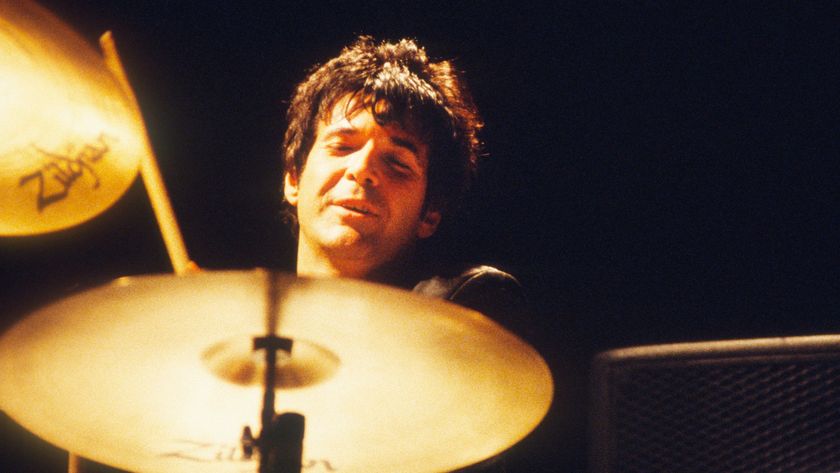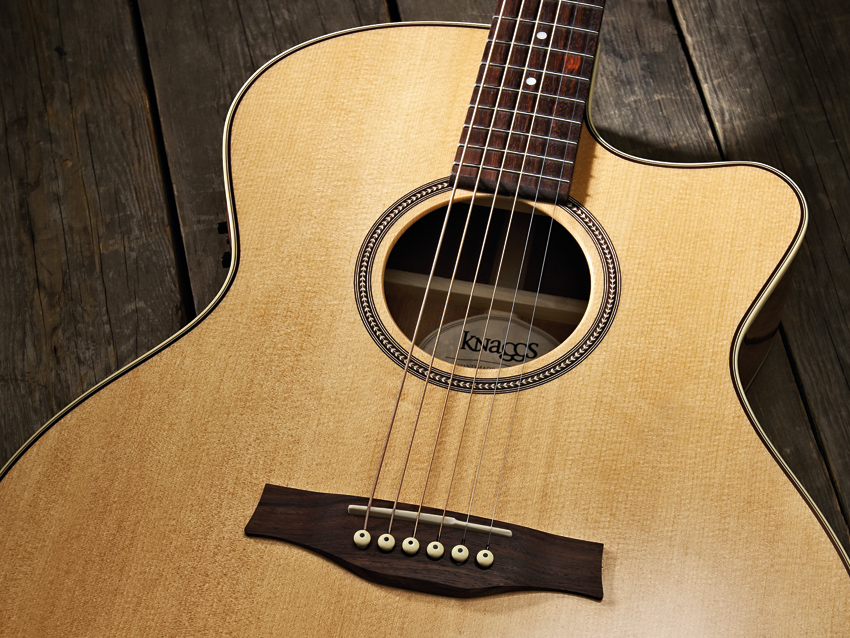MusicRadar Verdict
The Kipawa marries good acoustic tone with excellent electro sounds - it's a fine entry to the range.
Pros
- +
Simplistic design; competent build; good electro performance.
Cons
- -
Still a little tight sounding acoustically.
MusicRadar's got your back

Knaggs Quebec Series Kipawa

Knaggs Quebec Series Kipawa

Knaggs Quebec Series Kipawa
Now into its second year of production, Knaggs Guitars - founded by ex-PRS master builder Joe Knaggs and marketing and sales guru Peter Wolf - is mainly known for its Maryland-made boutique electrics.
We've also seen some prototype acoustics, but none have shipped as yet and in the meantime, we have the Quebec Series acoustics, which are made by Godin in Canada.
"The Kipawa is an able player, more than capable of laying down rhythm beds or delicate finger- and flat-picked styles."
"It's a collaboration," says Peter Wolf. "It started with the desire to have a guitar made in North America, not the Far East."
And it's an interesting partnership. Godin, we're informed, is the largest manufacturer of acoustic guitars in North America; its brands include Seagull and Simon & Patrick. The union is reflected in the Quebec Series and Kipawa names. The latter, like all Knaggs designs, comes from a river - this one is in Western Quebec.
Effortlessly stylish, this mini-jumbo is constructed to Knaggs' design from all solid woods. Initial impressions are very good. The lightly arched 'pressure tested' spruce top is clean, but far from bland looking, with a simple rosette and thick black purfling, and its edged top and back with ivoroid cream-coloured binding.
The solid mahogany sides taper from around 117mm at the base down to 92mm by the heel which, along with a lightly arched back, gives the feel of a quite deep and full body. The neck is mahogany, the heel and headstock finely jointed to the main piece.
The square-ish heel base has a rosewood cap, the headstock is black-faced over a light veneer and the Knaggs logo cleanly inlaid. In fact only the gold-plated Waverly-style tuners add any bling to what appears to be a simplistic, working guitar.
The spruce back braces, kerfed linings and side supports are clearly visible through the soundhole and outwardly the gloss body finish is thinly applied. The top's X-bracing is Adirondack spruce, again smooth and clean to the touch.
This workmanlike, efficient vibe continues to the simple dot-inlaid rosewood 'board with nicely installed medium thin frets that just lack a little sheen and polish - easily sorted with the next string change.
There's a slight hint of a 'V' to the 'C'-section neck profile and plenty of air to both the Tusq nut and saddle spacing. It suggests an all-rounder style, which may make it stylistically less specific, but is a wise move for the first model in a range.
Sounds
Any new acoustic takes some time to breathe, as the change you can hear from our initial tests on receiving the guitar after living with it for a month proves. The initial tightness to the overall sound is already developing depth, a sort of Martin-meets-Taylor tonality - some old school thump with more modernistic precision.
It's an able player too, more than capable of laying down rhythm beds or delicate finger- and flat-picked styles. Dropped tunings also work especially well.
The compact preamp is easy enough to use although the tuner display window is pretty small; the tuner itself is fast and accurate and it also mutes the output when engaged. With the EQ set flat the sound, straight into our Trace Acoustic TA200 is impressive and balanced.
A little mid-scoop and bass lift helps to lose a little hardness and both treble and presence controls can either enhance the steel string zing or mute it down for more reflective fingerstyle.
With a simple straightforward design, and equally efficient construction, the Kipawa is certainly fit for purpose. As yet it's not the most spacious sounding acoustic, as if it needs to be played more and for the woods and instrument to open out.
Conversely, its electro performance hits the spot immediately; on this evidence it'd be a performing guitar first and a sit-at-home or recording guitar second.
Of course, there's so much choice at virtually every electro acoustic price point that you might simply miss a guitar like this. But on the evidence of their high-end USA electrics and this 'mass-produced' Canadian electro, Knaggs has its sights firmly on the future.
Dave Burrluck is one of the world’s most experienced guitar journalists, who started writing back in the '80s for International Musician and Recording World, co-founded The Guitar Magazine and has been the Gear Reviews Editor of Guitarist magazine for the past two decades. Along the way, Dave has been the sole author of The PRS Guitar Book and The Player's Guide to Guitar Maintenance as well as contributing to numerous other books on the electric guitar. Dave is an active gigging and recording musician and still finds time to make, repair and mod guitars, not least for Guitarist’s The Mod Squad.

"I've analyzed hundreds of players over the years. They're all a part of what I do": Clem Burke's 10 essential drum albums

“This is a beautiful, well-executed Les Paul, and that’s the sort of guitar you tend to hold onto for life. That’s as sound an investment as there is”: Gibson Les Paul Standard ‘50s Double Trouble review

“We were able to fire up a bass sound that was indistinguishable from the flavour of New Order’s Blue Monday in seconds”: EastWest Sounds Iconic review








